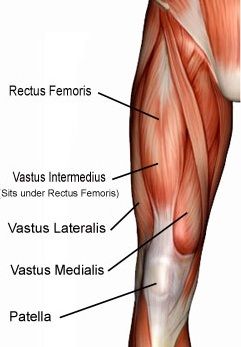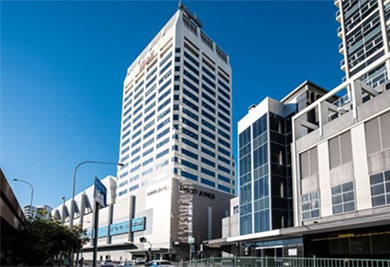What is Patellofemoral Pain Syndrome?
Patellofemoral pain syndrome is one of the most common knee complaints of both the young active sportsperson and the elderly.
Patellofemoral pain syndrome is the medical term for pain felt behind your kneecap, where your patella (kneecap) articulates with your thigh bone.
Patellofemoral pain syndrome, is mainly due to excessive patellofemoral joint pressure from poor knee cap alignment, which in time, affects the joint surface behind the kneecap.
What Causes Patellofemoral Pain Syndrome?
Your patella normally glides up and down through the femoral groove. As your knee is bent, pressure between your kneecap and the groove increases.
This retropatellar pressure is further increased if the patella does not ride normally through the groove, but “mistracks”, meaning it travels more to one side, making it rub against the femur.
Repeated trauma causes an increase in your retropatellar joint forces, which can lead to kneecap pain, joint irritation and eventually degeneration of your patella joint surface.
The most common causes of patellar malalignment are an abnormal muscle imbalance and poor biomechanical control.
Aching kneecaps (patellofemoral pain) affect 25% of the population at some time in their lives but it is more common in athletes. The sports where patellofemoral pain syndrome is typically seen are those when running, jumping and landing or the squatting position is required.
Sports include running, tennis, netball, football, volleyball, basketball, skiing and other jumping sports.
What Causes a Muscle Imbalance?
Your quadriceps (thigh) muscles attach to the patella and through it to the patella tendon, which attaches to the top of your shin. If there is a muscle imbalance between the quadriceps muscles: vastus lateralis, which pulls your patella up and outwards, and the vastus medialis oblique, which is the only quadriceps muscle that pulls your kneecap up and slightly in, then your patella will track laterally in the groove.
Common reasons for a weak vastus medialis oblique include knee injury, post-surgery, swelling or disuse. Longstanding tightness of your lateral knee structures will encourage your kneecap to drift sideways over time.
Patellofemoral pain syndrome is more common during adolescence, because the long bones are growing faster than the muscles, tendons and ligaments, putting abnormal stresses on the joints. Active children who do not stretch the appropriate muscles are predisposed to patellar malalignment.
What Biomechanical Issues Cause Patellofemoral Pain Syndrome?
Poor foot posture (eg flat feet) and weak hip control muscles can both allow your knee to abnormally twist and result in a lateral deviation of your patella.
When poor biomechanics are repeated with each step of your walking or running pattern that poor habit repeatedly traumatises your patellofemoral pain.
What are the Symptoms of Patellofemoral Pain Syndrome?
The onset of your kneecap pain is normally gradual rather than traumatic. Patellofemoral pain symptoms are normally noticed during weight bearing or jarring activities that involve knee bending.
Stairs, squatting, kneeling, hopping, running or using stairs are commonly painful. As your patellofemoral pain syndrome progresses your knee will become painful while walking and then ultimately even at rest.
You can also experience kneecap pain when you are in sustained knee bend eg. sitting in a chair. A nickname for this condition is “theatre knee”.
Patellofemoral Pain Syndrome Treatment
Approximately 90% of patello-femoral syndrome sufferers will be pain-free within six weeks of starting a physiotherapist guided rehabilitation program for patellofemoral pain syndrome.
For those who fail to respond, surgery may be required to repair associated injuries such as severely damaged or arthritic joint surfaces.
The aim of treatment is to reduce your pain and inflammation in the short-term and, then more importantly, correct the cause to prevent it returning in the long-term.
Phase 1 – Injury Protection: Pain Relief & Anti-inflammatory
- As with most soft tissue injuries the initial treatment is – Rest, Ice and Protection.
- Anti-inflammatory medication is often recommended to reduce pain.
Phase 2: Restore Full Muscle Length
- It is important to regain normal muscle length to improve your lower limb biomechanics.
- A specific stretching program is prescribed in this phase of treatment to address any muscle length issues,
Phase 3: Normalise Quadriceps Muscle Balance
- In order to prevent a recurrence, the quadriceps muscle balance and its effect on the patellar tracking will be addressed in this stage via a specific knee strengthening program
Phase 4 : Normalise Foot & Hip Biomechanics
- Patellofemoral pain syndrome can occur from poor foot biomechanics (eg flat foot) or poor hip control.
- To prevent a recurrence, your foot and hip control will be addressed.
- In some instances, you may require a foot orthotics and footwear changes to control abnormal foot and leg biomechanics along with a hip stabilisation program.



